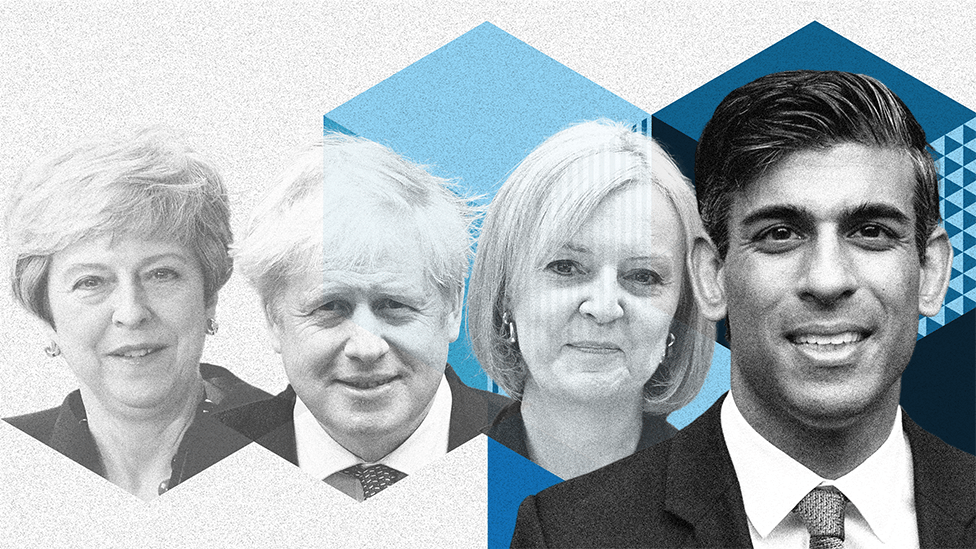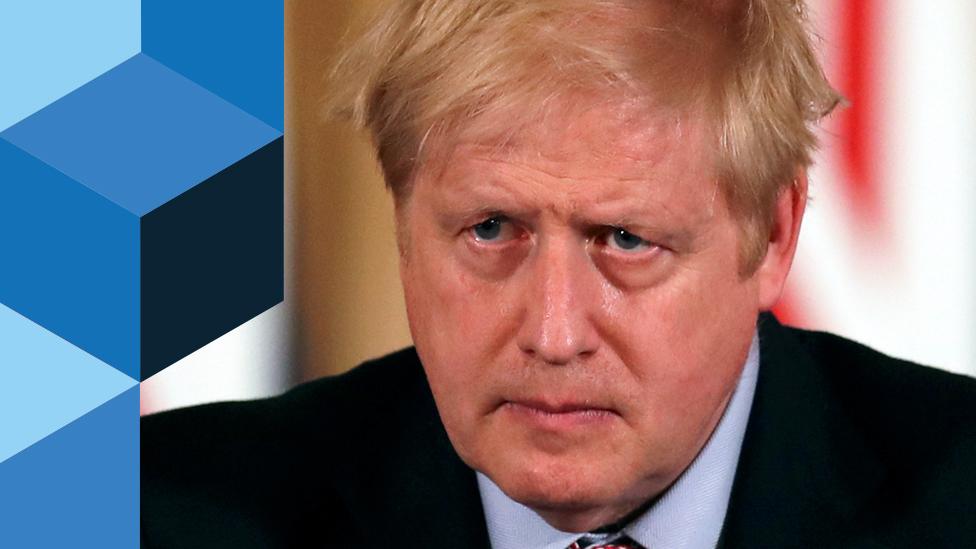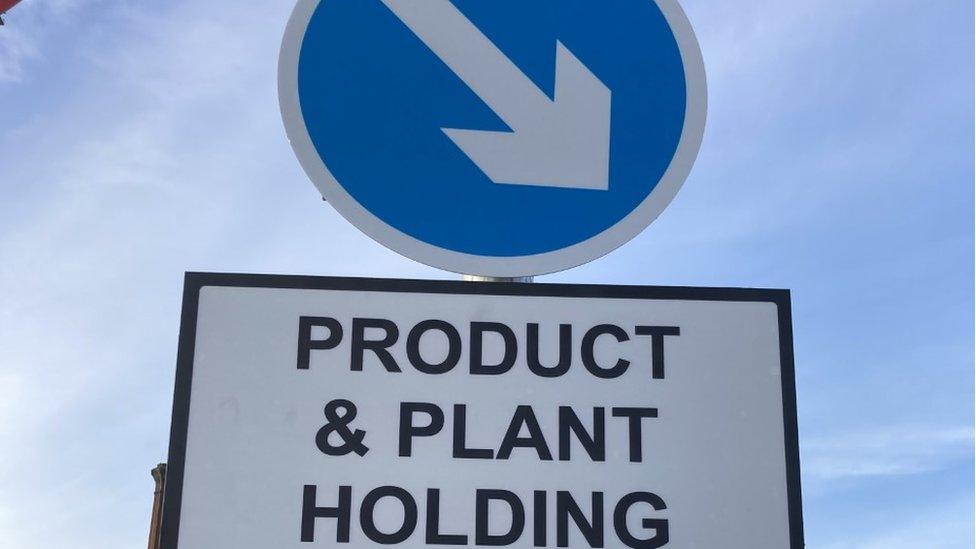Brexit: Why four PMs have accepted the Irish Sea border
- Published

"No UK prime minister could ever agree to it."
Those were Theresa May's words in the House of Commons in February 2018.
She was referring to a post-Brexit "customs and regulatory border down the Irish Sea" that she said would "undermine the UK common market and threaten the constitutional integrity of the UK".
Her comment was contrary to the deal she had made with the EU two months earlier, which effectively meant a sea border would be required to prevent the hardening of the Irish land border after Brexit.
And despite her words each of her three successors would also accept the logic of a sea border.
Theresa May

In January 2017 Mrs May said Brexit would mean the UK leaving the EU's single market and the customs union.
From that moment it was inevitable that there would have to be a new border somewhere.
Simply look at the EU's other external frontiers, such as the customs posts between Sweden and Norway.
The Irish government quickly decided that for a combination of political, security and economic reasons there could be no hardening of the land border with Northern Ireland.
The EU adopted the Irish position as one of its negotiating priorities.
By the summer of 2017 the UK government had also accepted there would be no new infrastructure at the land border.
Through the second half of that year the UK and EU negotiating teams laboured to square that soft Irish border with a hard Brexit.
In December they reached an interim agreement, the Joint Report.
It effectively said that, save for some other improbable solution, Northern Ireland could continue to align with some rules of the EU internal market and the customs union.
That was known as the backstop and its clear implication was a sea border: goods from Great Britain would need to be checked and controlled as they arrived at ports in Northern Ireland.
The Democratic Unionist Party (DUP), which was propping up Mrs May's government, had got language inserted into the deal at the last minute, which in the party's view should have given it a veto on sea border arrangements.
For the rest of Mrs May's unhappy time in office she attempted to finesse the backstop in ways which would minimise the sea border and satisfy the DUP, her own Conservative Party and the EU.
She was not able to do that and her party forced her out.
Boris Johnson

Boris Johnson replaced Mrs May in July 2019, promising to get rid of the backstop.
He had been at the previous year's DUP conference, decrying the backstop as a tool to turn Northern Ireland into an "economic semi-colony of the EU".
But by October he was proposing an "all-island regulatory zone" which would effectively keep Northern Ireland in the EU's single market for agriculture, food and manufactured goods.
The DUP was initially on board with that idea as it would have needed consent from the Northern Ireland Assembly, which would likely have given the party a veto.
However the Irish government and the EU were unconvinced as the plan would have potentially meant a new customs border in Ireland.
They were also concerned an up-front veto for the DUP could prevent the "all-island regulatory zone" from ever materialising.
In the end Mr Johnson relented and agreed the Northern Ireland Protocol.
It unambiguously meant a sea border with a post-implementation approval role for the Stormont assembly but no DUP veto.
However, Mr Johnson spent a considerable period of time misrepresenting what he had agreed.
That was not helpful for the businesses trying to prepare for the sea border's implementation.
In 2021, as the practical and political consequences of his protocol had become clear, Mr Johnson got his Brexit point man Lord Frost to draw up a plan for a radical redrawing of the arrangement.
Liz Truss

After Lord Frost's resignation Liz Truss took responsibility for tackling the protocol.
As foreign secretary she introduced the Protocol Bill and would press ahead with it when she was briefly prime minister.
The bill is often described as giving UK ministers the power to unilaterally "rip up the protocol" if the EU did not agree to significant reforms.
However it is worth remembering that even with that power the intention was not to sweep away the sea border.
Instead its operation would be modified: there would be green and red channels for moving goods through the ports, businesses would have to register with a trusted trader scheme and there would be sharing of trade data with the EU.
In other words Mrs Truss's plan would deliver much the same sort of sea border as the one her successor has now committed to.
Rishi Sunak
Watch: Key moments from the PM's NI Brexit deal speech
In his speech in Windsor on Monday Mr Sunak said his new framework agreement with the EU had "removed any sense of a border in the Irish Sea".
The word "sense" is important here.
Northern Ireland consumers should certainly have no sense of a border when it comes to buying food, plants and medicines or taking their dog on the ferry to Scotland.
Businesses involved in moving goods from Great Britain to Northern Ireland will find it easier than they do now.
Physical checks will be rare and the documentation will be simplified.
But it will still be a trade border of sorts.
Moving goods from Great Britain to Northern Ireland remains conditional: it will require signing up to trusted trader schemes, providing information on what goods are moving and having the correct labelling.
Given the constraints the UK set itself back in 2017 - a hard Brexit with no land border - that may be as good as it gets.
Though of course a future prime minister could choose to change those constraints.
- Published2 February 2024

- Published27 February 2023

- Published23 December 2020
